2 for 2: nocturnal listens and their watch counterparts
2albums2watches2furious — in this edition: a look at the dubstep pioneer Burial, and a bold late-career reinvention by The Horrors
№ 1: Burial, Untrue (2007)
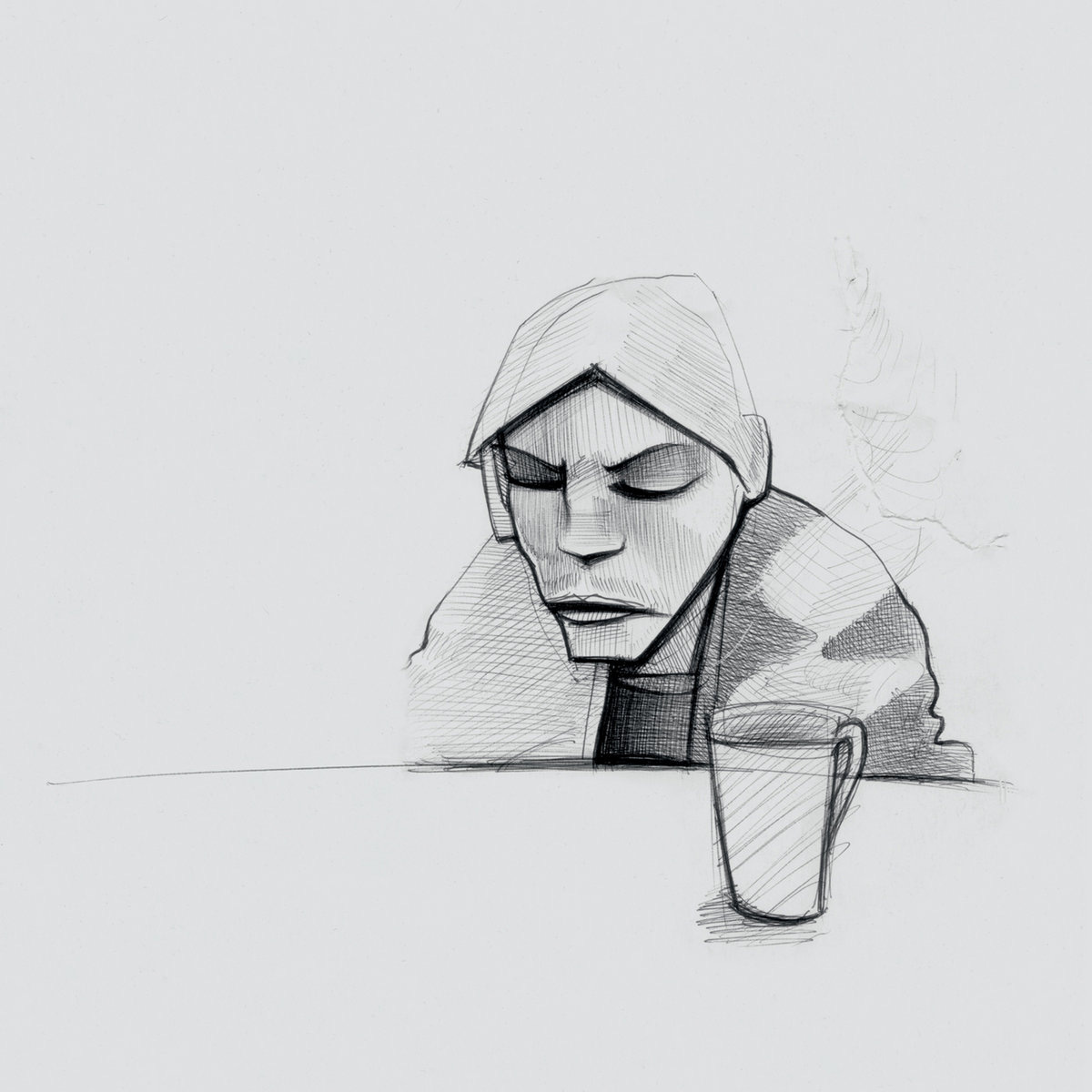
genre: dubstep, UK garage
the album: The nom de plume of one of electronic’s most enigmatic personas, William Bevan, known as Burial, is a British electronic musician and seminal figure in the world of dubstep. Untrue much unlike typical garage and EDM, bears a dense emotional core meant to move the heart and stimulate the mind. By skillful use of space and manipulation of sound bites from various songs from video games and film scores, Untrue is like watching vignettes of survivors of heartbreak, melancholia, and moving on. British music critic Mark Fisher perhaps put Burial’s cerebral approach to dubstep best: “It is like walking into the abadoned [sic] spaces once carnivalized by raves and finding them returned to depopulated dereliction.”
best songs: Archangel; Near Dark; Raver
fav lyric: “cause at once upon a time, it was you I adored” (track 7, “In McDonalds”)
the watch: NOVE Rocketeer C007-07
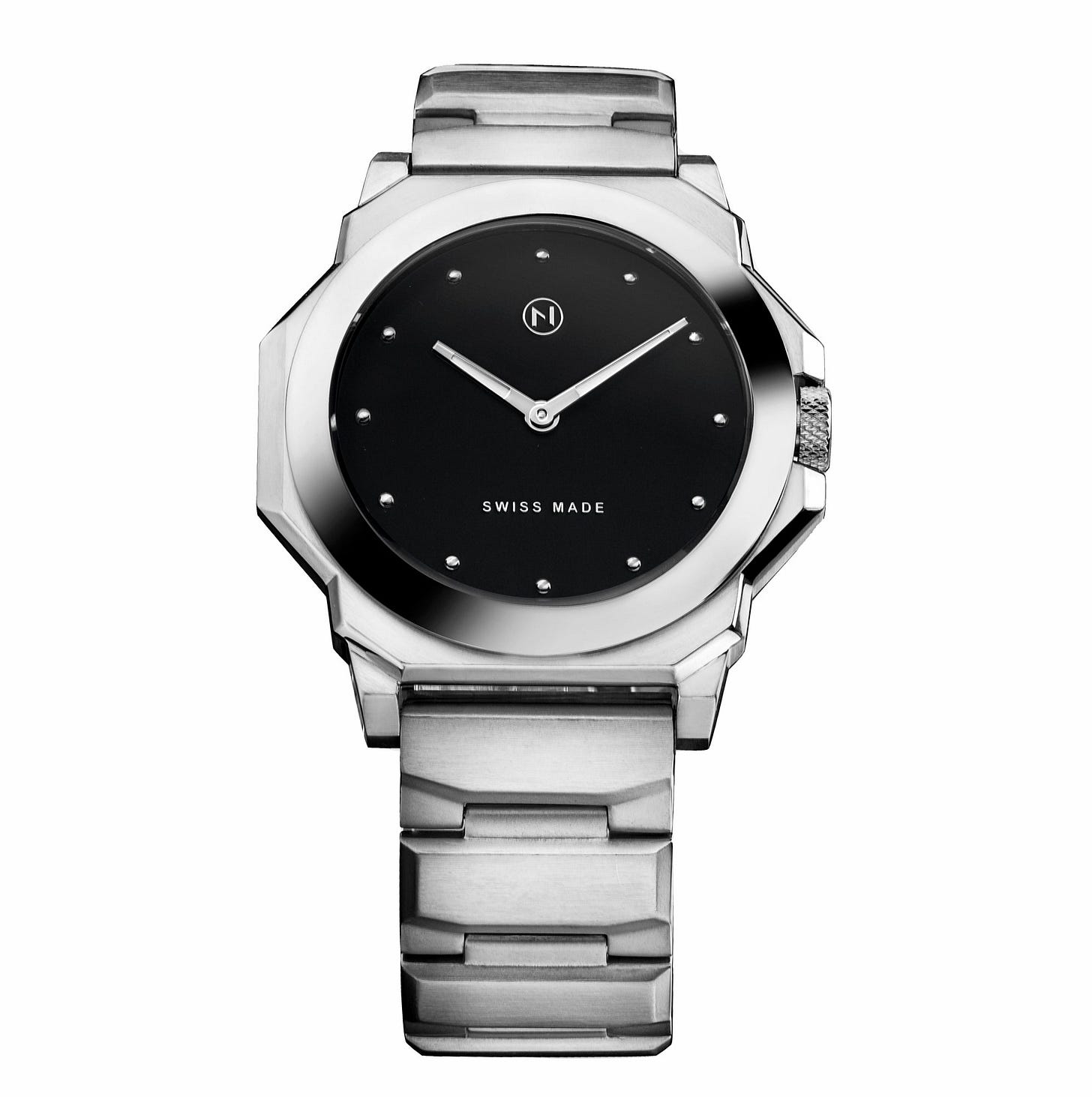
NOVE (est. 2015 by Tiffany Meerovitsch) is a microbrand headquartered in Hong Kong, with production taking place in Switzerland. NOVE had years ago caught my eye with the Rocketeer model. Most of their models are far too large for my taste, but I’ve always respected NOVE’s maximalist attitude towards handcrafted watch design, and their preference for two-hander quartz watches: “We create timepieces that are an expression of individuality”, the self-proclaimed Generation Z entrepreneur said in an interview.
The angular industrial edges of the Rocketeer, juxtaposed with the delicate dial and indices, creates a conflict that really intrigues me. That’s exactly the vibe I get from Untrue: the looped dubstep beats pulsate as a skeletal frame on which the undercurrent of warbling samples, synths and pads all hangs. The music bears a cold exterior, but a deceptively warm center. The themes of the album, morose as they may be in the opposite vein of most “clubbing music”, impress upon the listener a sense of “yes it happened, but it’s over now”.
In terms of character design, it is said that sharpness and angularity can be indicators of their personality or backstory. A protagonist may be portrayed in a style that is rounded and soft. The antagonist, however, can literally be a sharp contrast—often having strong, defined angles, with hard stops as if to convey a sense of will and intent. An artist’s tip is given regarding the use of triangles in particular: “triangles are known to communicate the most malice and aggression; they are predominantly used for antagonist character designs”.1
Similarly, a design centered around a severely angular shape, such as a triangle, can also be symbolic of pain and guilt. So what does this have to do at all with the watch and the music?
Take a look at the album art with our subject. The man is sitting at a table, clearly and sharply defined, as opposed to the haze surrounding him. His appearance is accentuated with sharp edges on his jawbone and chin. However, gently draped over our subject is a cap (or beanie), and a blanket to keep warm—and these are noticeably rounder, softer in appearance. The steady unfailing tick of the Swiss Ronda Slimtec 1062 quartz movement emphasizes the album’s continuous, driving beats.
The Rocketeer, whose case measures at a considerable 45.9mm, is particularly fitting as the intensity of the industrial design of the bracelet and case are offset by the delicateness and minimalism of the dial. There’s no seconds hand. The applied indices are polished, delicate plots. The only source of lune this watch provides are slivers within the hour and minute hands. The case, however, is comprised of all sorts of sharp geometry, the bevels on the case and crown guards being the immediate standouts. And yet the bezel (despite its thickness) is chunky and uniformly round, as if to wall off any who might stray too close.
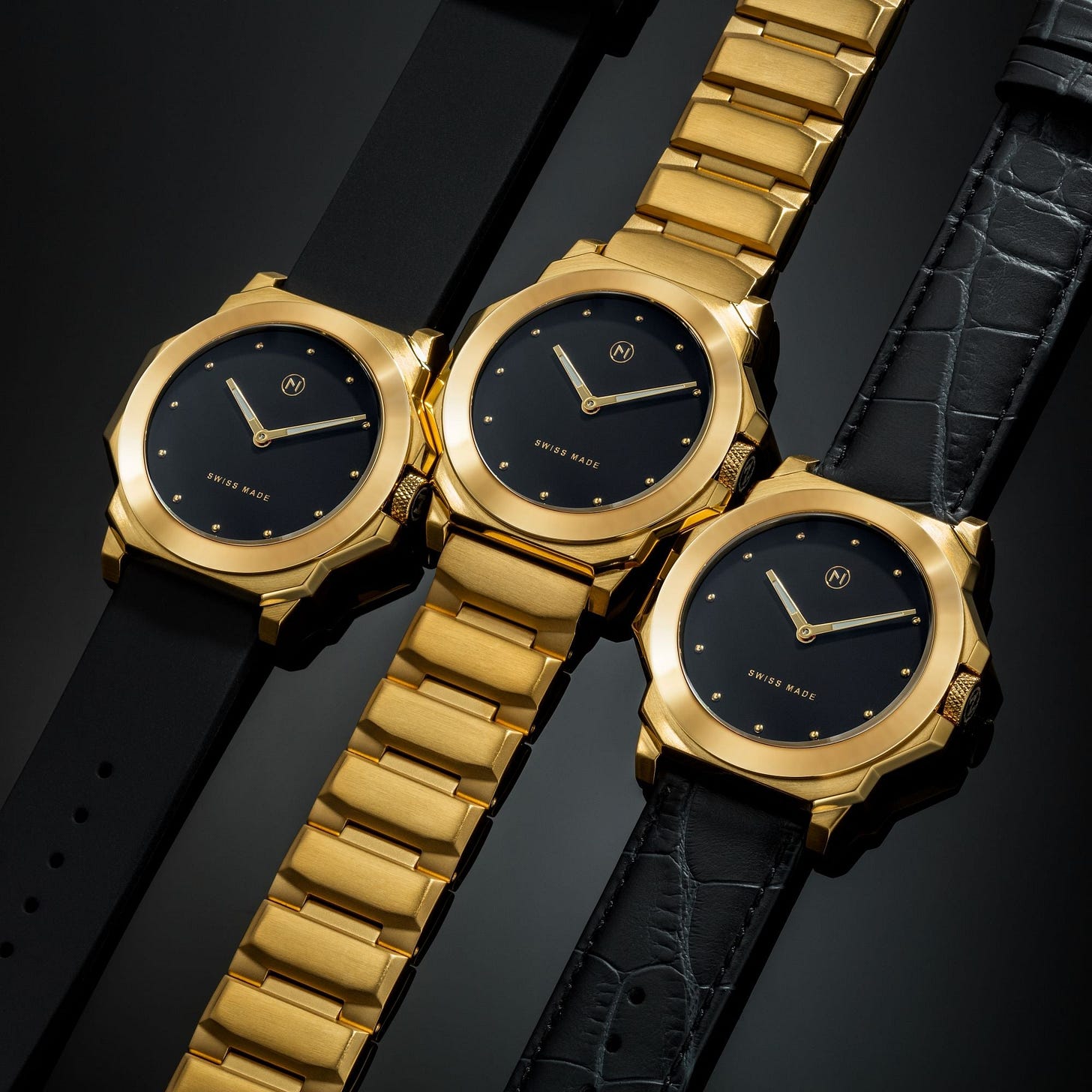
The bleakness of the exterior seems to serve as a mask to conceal the fragility underneath, in the same way that the brooding tones and moods of Untrue are really vital signs of a warm heart beating within. The Rocketeer is exceptionally thin at 8.9mm, and while I haven’t handled it personally, videos out there do well to show the watch’s robust and brutalist nature.
The NOVE Rocketeer, Ref. C001-07, is priced at $480 before tax on the brand’s website. The black dial and steel case/bracelet configuration is currently sold out, but the model is available in different finishes such as gold and blue.
№ 2: The Horrors, Night Life (2025)
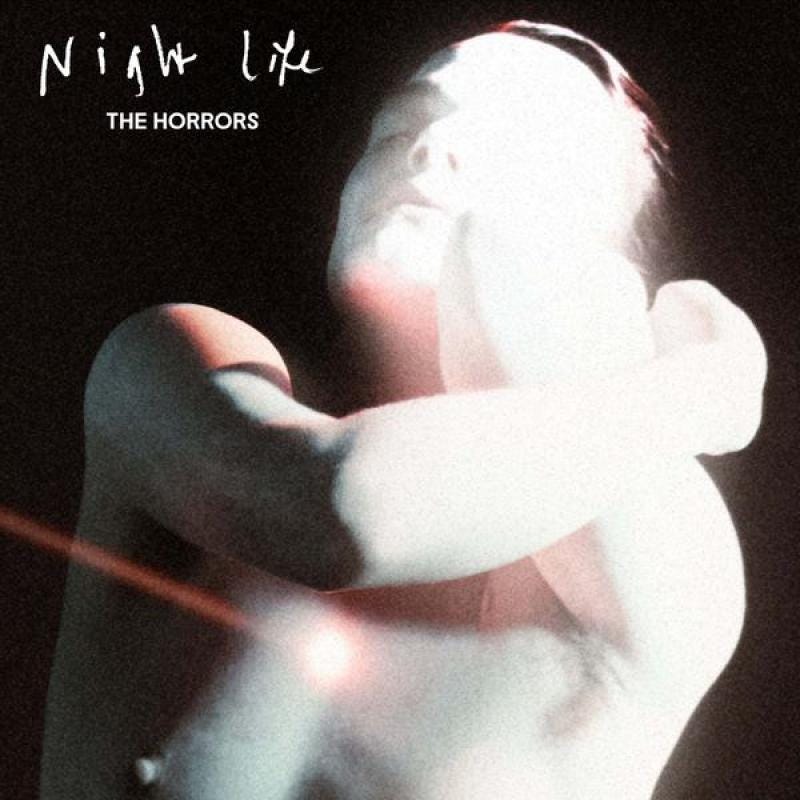
genre: darkwave, alternative rock
the album: Twenty years removed from when they began as a garage rock/punk hybrid, The Horrors have had quite the musical evolution since. Owing much to their name, the English band embraced shock rock on their 2007 debut, Strange House (as evidenced by song titles as “Jack the Ripper” and “Sheena Is a Parasite"), but as the years went on the sound would be less abrasive and confrontational. Gradually incorporating color in the way of post-punk, krautrock, synthpop and shoegaze influences, The Horrors would dial back their straightforward shock antics and dial in to pure atmosphere. On Night Life, The Horrors’ taste for dark aural textures and eerie soundscapes return bubbling to the surface. The album just sounds cold—there’s an iciness to the songs, like moments frozen in time, reborn as sharpened, deadly icicles.
best songs: Silent Sister; The Silence That Remains
fav lyric: “are we losing touch / with all the things we care about?” (track 7, “More Than Life”)
the watch: Nivada Grenchen Antarctic Spider
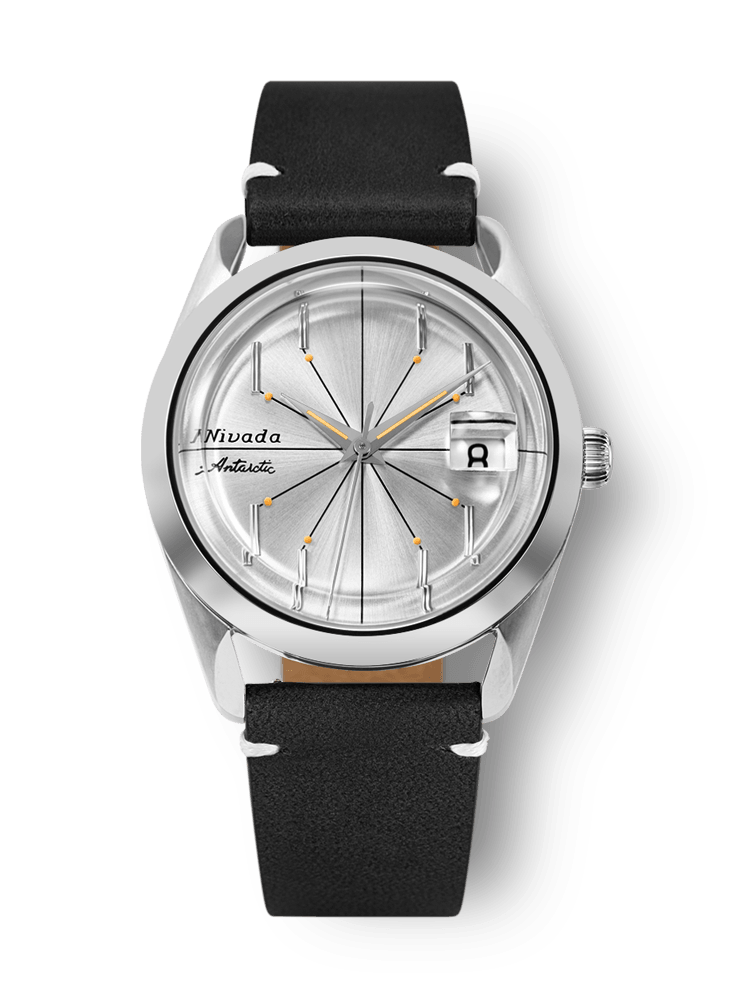
Specifically, Ref. 32023A09 with the black leather strap and white contrast stitching in the 38mm case size. Nivada Grenchen (est. 1926 in Grenchen, Switzerland as simply Nivada) designates this model as the “Spider”, and it’s easy to see why: the “legs” of the eight vertical applied indices, connected by a “web” of straight black lines protruding from the center of the dial. It’s a reinterpretation of a 1970s variation of the Super Antarctic.
There’s a wealth of curiosities here, like the sector dial. The asymmetrical logo and model name at 9 o’clock, opposite the date complication at the 3 (with magnifier lens, AKA “cyclops”), adds a sense of veracity—as if the watch is laying itself bare to be seen as uncompromisingly true, honest. The Antarctic script has a handwritten, scribbled look to it; the album title Night Life is similarly scrawled. The Spider’s dial is also nearly devoid of all color, save for aged-effect lume accents capping off the inner edges of the indices, and within the hour and minute hands. The radial sunray finish on the silver dial is simply gorgeous, and the onion-like crown echoes early 20th century pilot watches.
The Horrors long refined their craft of drowning the listener in ambience. Skying (2012) was a decisive step towards neo-psych and shoegaze; V (2017) flirted with industrial, synth-pop and trip-hop. Night Life continues the trend of melding light and shadow, while notably injecting much of the first album’s imposing vibe. It really is a dynamic record, and especially so towards the end.
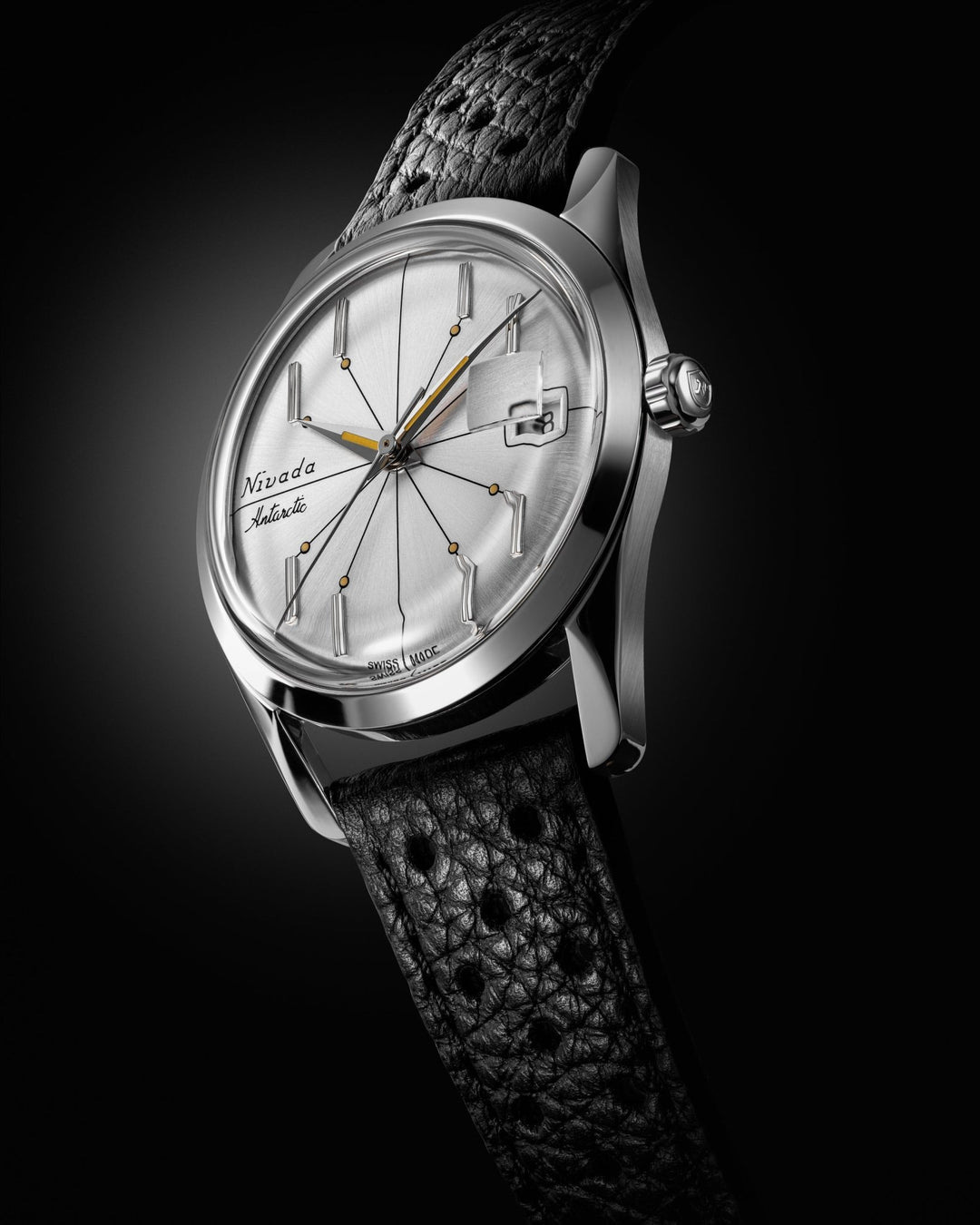
The faceted lugs2 of the watch bear a subtly cool design, and can be easy to miss without drawing specific attention to it; the lugs have this appearance of twisting the further they extend from the case, which reminds me of the figure in the cover art. Lugs are an often overlooked part of watch design. A beautiful, grand feu3 enamel dial on an anOrdain or the mirror-like Zaratsu polish4 on a Grand Seiko might rightfully be the center of attention—but it’s harder than expected to make the lugs a seamless, natural transition while still keeping with the look of the rest of the watch. Go too far, and the lugs will look stark, out of place, and an eyesore even at a casual glance.
Besides maintaining visual interest, the lugs of a watch have to be shaped and carefully designed to maintain their practicality on a strap or bracelet. If the distance between the lugs top-to-bottom is too long, it could rule out a huge chunk of wearers who don’t want the ends of the lugs dangling off the edge of the wrist. A lug width (the side-to-side measurement that determines the compatible strap width) of 19mm as opposed to the far more common 20mm or 18mm can mean all the difference to a collector. It just goes to show that numbers on a spec sheet aren’t everything. For the smaller-wristed, a NOMOS Club Campus rounding out at 36mm sounds ideal on paper for a smaller wrist, but then you have the considerable lug-to-lug distance of nearly 48mm (comparatively, a 36mm Rolex Explorer from 2021 with its shorter, arguably more proportional lugs, bears a forgiving lug-to-lug of 43mm).
Anyways, I love the twisted, brushed and polished lugs on the Spider. The lug-to-lug on this 38mm model is a 45mm, with a svelte thickness of 11.1mm. It’s a whole lot of character in a compact, vintage-inspired package with genuine history. It updates the O.G. Antarctic to modern standards: a double-domed sapphire crystal, automatic Swiss Soprod P024 movement, and a screw-down crown to secure a 10ATM (100 metes) water resistance rating.
The 38mm Nivada Grenchen Antarctic Spider, Ref. 32023A09, is available for purchase directly from the Nivada Grenchen website for $945 before tax.
● __ ▲
Source: “Why Is Shape Language So Important?”, written by Rhea on 21-draw.com. Think of Disney’s Sleeping Beauty (1959) with Maleficent: her chin, horns (anyone’s guess if it’s actually just a headdress), and jagged edges of her cloak. Perhaps gaming’s most famous example is Pyramid Head from Silent Hill 2 (2001), with his massive titular triangular helmet strongly suggesting intense pain.
lugs: the protruding ends (or “horns”) of a watch case, where a strap or bracelet are affixed by means of a springbar. In most cases a springbar is run between the lugs and through the holes on the base of a strap so that both the springbar and strap stay in place.
grand feu: meaning “great fire” en Français. In the words of Scottish microbrand anOrdain (est. 2015 in Glasgow by Lewis Heath) a grand feu enamel dial is “the art of fusing glass to metal… [involving] a wafer thin metal disc and multiple layers of enamel powder delicately applied by paintbrush, layer by layer, and fired at upwards of 800 degrees Celsius.”
Zaratsu polish: a distinct hallmark of Japanese luxury watchmaker Grand Seiko (est. 1960). This type of finishing is a highly sophisticated treatment of the steel surface, polished to a mirror sheen with utmost smoothness. This is done by a craftsman who specializes in Zaratsu polishing.



